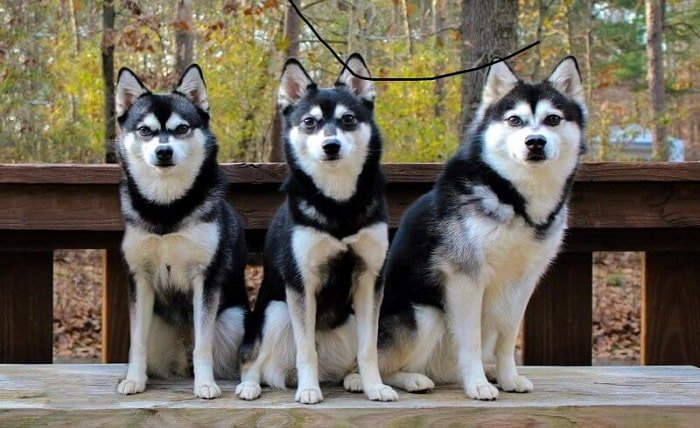The Kleki Dog Breed: A Comprehensive Guide

The Kleki dog breed, while not as commonly known as some other breeds, has gained attention in recent years due to its affectionate nature and unique characteristics. If you’re wondering, “What is the Kleki dog breed?” it’s an emerging, lovable breed that mixes the best qualities of various breeds to create an excellent companion for families and individuals alike. Whether you’re a first-time dog owner or an experienced one, the Kleki dog breed offers a wonderful balance of playfulness, intelligence, and loyalty.
In this blog post, we will dive deep into the Kleki dog breed, covering its origin, appearance, temperament, and more, to help you determine if this charming breed is the right fit for your home.
The Origins of the Kleki Dog Breed
The Kleki dog breed is a relatively new and lesser-known breed. It is often considered a hybrid dog, resulting from the crossing of two distinct dog breeds that complement each other’s traits. The origins of the Kleki dog breed can be traced back to breeders who sought to combine the agility and intelligence of one breed with the loyalty and affectionate nature of another.
The Kleki dog breed was first developed in the early 2000s and has steadily grown in popularity due to its friendly demeanor and suitability for both active individuals and families with children. The goal was to create a dog that is easy to train, social, and energetic while also maintaining a gentle disposition. Although the specific breeds that make up the Kleki dog are not always the same, it typically involves a combination of working and companion breeds.
Key Characteristics of the Kleki Dog Breed
The Kleki dog breed is known for its charming appearance and balanced temperament. This breed has characteristics that make it an appealing choice for many dog lovers. Let’s explore the key physical and behavioral traits of the Kleki dog breed.
Physical Appearance
Kleki dogs are medium-sized, with a well-proportioned build that gives them an athletic and agile look. They typically stand around 18 to 24 inches tall at the shoulder and weigh between 35 and 50 pounds. Their coat is often thick, soft, and dense, providing them with protection in varying climates. The coat can come in various colors, including shades of brown, black, white, or a mix of these colors.
One of the distinguishing features of the Kleki dog breed is its expressive eyes, which are often a deep brown or amber. Their ears can either be erect or semi-erect, contributing to their overall alert and curious look.
Personality and Temperament
Kleki dogs are known for being friendly, affectionate, and highly intelligent. They are generally good-natured and form strong bonds with their owners, making them excellent family pets. They tend to get along well with children and other animals, which is a huge plus for families who have multiple pets.
Kleki dogs are energetic and require regular exercise to stay happy and healthy. They are naturally playful and love engaging in activities such as running, hiking, and playing games. However, their intelligence means they are also eager to learn and enjoy training sessions, making them relatively easy to teach new commands or tricks.
Caring for Your Kleki Dog Breed
Like any dog breed, proper care is essential to ensure the health and well-being of your Kleki dog. Let’s take a look at some important care considerations for the Kleki dog breed.
Diet and Nutrition
Providing your Kleki dog breed with a balanced and nutritious diet is vital to their health. This breed requires high-quality dog food that contains protein, healthy fats, and a range of vitamins and minerals. The amount of food your Kleki dog needs will depend on its age, activity level, and weight.
For adult Kleki dogs, you’ll want to feed them two meals a day, spaced about 12 hours apart. Puppies may need more frequent feeding, so it’s important to follow the guidelines set by your veterinarian to avoid overfeeding or underfeeding.
Grooming and Maintenance
The Kleki dog breed has a thick coat, which requires regular grooming to keep it clean and healthy. Brushing your dog once or twice a week will help prevent matting and reduce shedding. During seasonal changes, you may need to brush more frequently to help with shedding.
In addition to brushing, you’ll need to pay attention to other grooming needs, such as trimming their nails, cleaning their ears, and brushing their teeth. Bathing should be done as needed, but over-bathing can strip their coat of natural oils, so it’s best to avoid frequent baths.
Exercise and Mental Stimulation
Due to their energetic nature, the Kleki dog breed requires regular exercise to stay physically and mentally stimulated. Aim for at least 30 to 60 minutes of exercise every day, whether through walks, runs, or playtime in the yard. Additionally, mental stimulation is just as important, so be sure to provide interactive toys, puzzle feeders, or training sessions to keep their minds sharp.
Training Your Kleki Dog Breed
Training is a key component of owning any dog, and the Kleki dog breed is no exception. Thanks to their intelligence and eagerness to please, Kleki dogs tend to be relatively easy to train, especially when positive reinforcement techniques are used. Here’s how you can effectively train your Kleki dog breed.
Positive Reinforcement
The Kleki dog breed responds well to positive reinforcement training methods, which involve rewarding desired behavior with treats, praise, or toys. Be patient and consistent, and avoid using punishment or negative reinforcement, as it can undermine the trust between you and your dog.
Start training your Kleki dog at a young age to establish good habits early on. Basic commands such as sit, stay, and come should be introduced first, followed by more advanced commands or tricks as your dog’s skill level improves.
Socialization
Socializing your Kleki dog breed is essential to ensure they are comfortable around people, children, and other animals. Early socialization can help prevent behavioral issues, such as fear or aggression, and foster a well-rounded and confident dog.
Arrange playdates with other dogs, take your dog to public places, and expose them to various environments and situations to build their confidence and adaptability.
Health Considerations for the Kleki Dog Breed
While the Kleki dog breed is generally healthy, it’s important to be aware of potential health issues. Regular veterinary check-ups and preventative care will help keep your dog in good shape. Below are some common health considerations for the Kleki dog breed.
Common Health Problems
The Kleki dog breed is typically free from major hereditary diseases, thanks to careful breeding practices. However, like all dogs, they can still develop common health problems such as hip dysplasia, ear infections, or allergies. Regular vet visits and proper care can help detect and manage these conditions early.
Preventative Care
Routine vaccinations, flea and tick prevention, and regular parasite control are essential for keeping your Kleki dog breed healthy. Make sure to follow your veterinarian’s recommendations for vaccinations and preventative care to protect your dog from various illnesses.
Additionally, regular check-ups will help catch any potential issues before they become serious problems, ensuring your Kleki dog remains happy and healthy for years to come.
Why Choose the Kleki Dog Breed?
The Kleki dog breed has several advantages that make it an excellent choice for dog owners. Whether you’re a first-time pet parent or a seasoned dog lover, the Kleki dog breed can be a fantastic addition to your family.
Family-Friendly
The Kleki dog breed is known for being affectionate and loyal, making them great companions for families. They are generally good with children and other pets, and their playful nature ensures that they will engage with family members of all ages.
Adaptable and Versatile
The Kleki dog breed is versatile, as it can thrive in a variety of living situations. Whether you live in an apartment or a house with a large yard, the Kleki dog can adapt to different environments as long as they receive enough exercise and attention. They also tend to get along well with other dogs, which makes them an excellent choice for multi-pet households.
Low Maintenance
Although the Kleki dog breed requires regular grooming and exercise, they are relatively low-maintenance compared to other breeds. Their intelligence and easy-going nature make them easy to train, and their friendly disposition makes them great companions.
Conclusion
In conclusion, the Kleki dog breed is a delightful, intelligent, and affectionate breed that can make an excellent addition to many families. With its friendly demeanor, energetic personality, and easy-to-train nature, the Kleki dog is perfect for active households looking for a loyal companion. Whether you have a large backyard or live in an apartment, this breed can adapt to your lifestyle as long as they receive adequate exercise, mental stimulation, and love.
If you’re considering adopting a Kleki dog, be prepared to provide them with the attention and care they need to thrive. With proper training, socialization, and health care, your Kleki dog will reward you with years of loyalty and companionship.
FAQs
- What is the Kleki dog breed? The Kleki dog breed is a hybrid dog known for its affectionate, energetic, and intelligent nature. It is typically a mix of working and companion breeds.
- How big do Kleki dogs get? Kleki dogs are medium-sized, typically standing between 18 to 24 inches tall and weighing 35 to 50 pounds.
- Are Kleki dogs good with children? Yes, Kleki dogs are friendly and get along well with children, making them excellent family pets.
- What type of grooming does a Kleki dog need? Kleki dogs have a thick coat that requires regular brushing, along with nail trimming, ear cleaning, and dental care.
- Are Kleki dogs easy to train? Yes, Kleki dogs are intelligent and respond well to positive reinforcement training methods, making them relatively easy to train.





